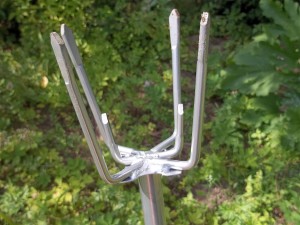The garden claw
Who actually more on tried and tested tools like hoe, Spade and digging fork swears, he usually looks very skeptically at the new miracle tools. After all, people have been working the soil for thousands of years. Whoever comes along now and claims, he has found the philosopher's stone, he often has a hard time with die-hard gardeners. Still, there is nothing wrong with it, if you dare to look over your own garden fence from time to time.

For example, there is the garden claw. This tool is touted as a device for loosening the soil and removing weeds. And it should also be able to be used to mix in fertilizer and compost. The garden claw owes its name to its prongs, which are arranged like claws. These are stabbed into the ground and turned around using the long style. This loosens the upper soil layer in the area of the tines. You then pull out the claw and reinsert it.
If you use the garden claw in the normal garden, Certainly not overly convincing. The question: “What can she do, what others cannot?“Doesn't really answer.
The matter is quite different, if you want to reclaim a new piece. Anyone who has ever struggled through the felt of a piece of lawn with a spade or digging fork, who knows how strenuous and not very back-friendly this work is. The garden claw does a really good job here. By means of their turning movement, the upper layer of the interwoven root plexus is loosened and can then be picked up and removed relatively easily with a digging fork. It is best to do this in rows. First loosen one or two stretches with the garden claw and then rework with the fork. This is how you can do it, to cultivate a new piece of garden in a relatively short time without great effort. This is where the garden claw makes its grand entrance.
